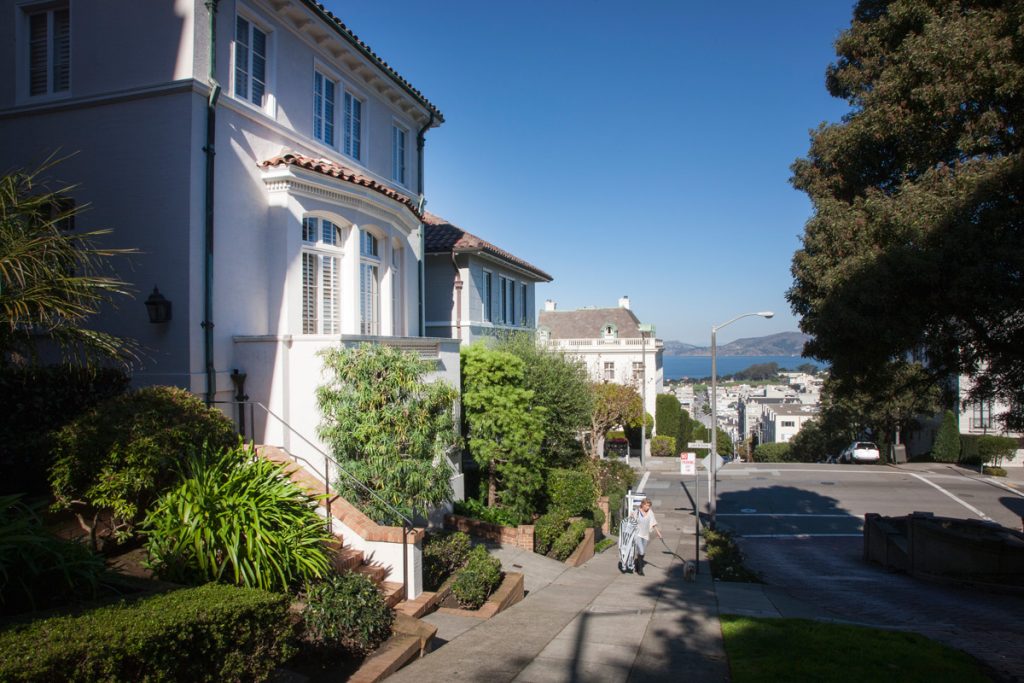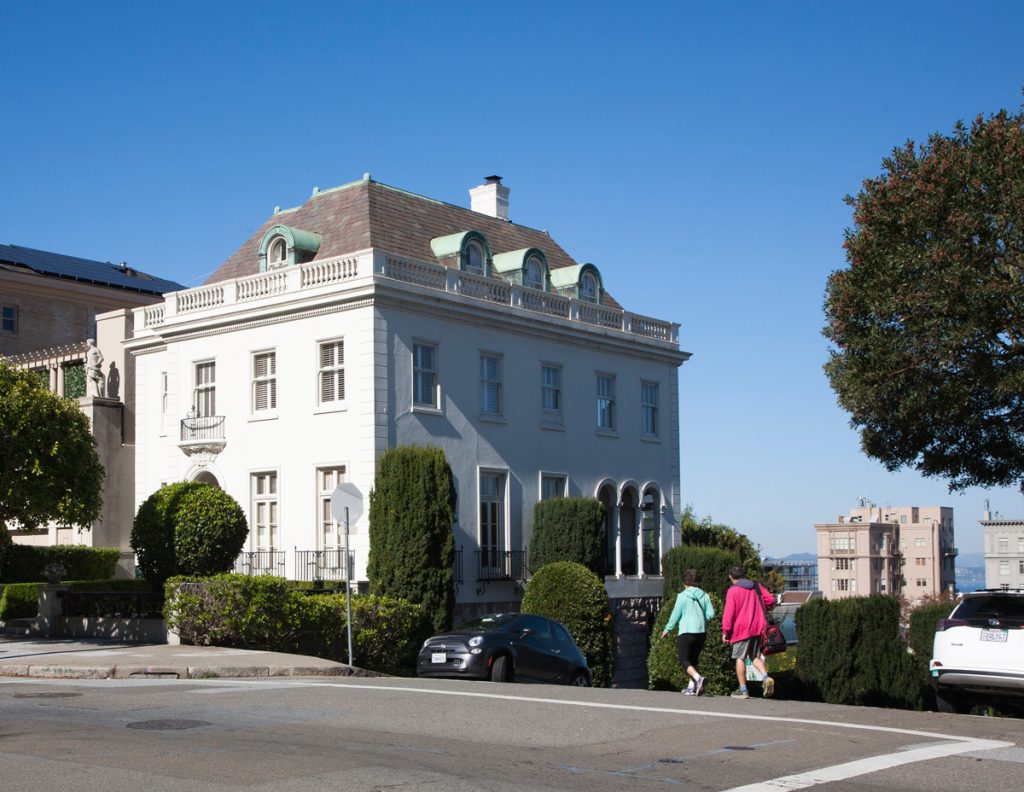LANDMARKS | BRIDGET MALEY
Architect Edward Eyestone Young became known for his collaborative work with speculative housing developers during the first few decades of the 20th century. Designing and building houses primarily on San Francisco’s north side, with a particular focus in Pacific Heights, Presidio Heights and along Lake Street, Young established strong relationships with some of the city’s important developers. Several homes were often crafted in a small group, each with a similar floor plan but with varying facades.
Three of Young’s more distinctive Pacific Heights collections still stand at the corners of Octavia and Jackson, Divisadero and Green, and Presidio and Jackson.
A Missourian, Young arrived in San Francisco in 1902 at the age of 32. Not much detail is known about Young’s early years, but he appears to have received some architectural training before relocating to California; by 1905, he had obtained a state architectural license.
In November 1906, Young married Julia Tharp, a sister of architect Newton Tharp and a well-known musician. A year later, Young designed and built their family home at 22 Presidio Terrace, signaling that he had already achieved a certain financial and social stature. The Youngs lived in that house for 25 years, raising five children there. When Young died in 1934, his son, John Davis Young, took over his father’s established architectural practice.
Young’s larger-scale projects include Glide Memorial Church and the Californian Hotel, now the Serrano Hotel, both listed on the National Register of Historic Places; an apartment building at California and Octavia Streets that Young both designed and developed; the Francisca Club near Union Square; and the Park Lane Apartments on Nob Hill.
In The Historic Houses of Presidio Terrace, architectural historian Patrick McGrew noted that Young’s work “was successful and sold easily, generating a repeat clientele among the developers.” One such partner was Matthew A. Little, an Irishman, who came to San Francisco in 1901. Little’s 1956 Chronicle obituary claimed he constructed “one of the first buildings that went up after the 1906 earthquake and fire at Ellis and Stockton Streets” and that he “erected many apartment houses and homes here in his 55 years as a builder.” Little’s local investments were significant and appear to have been highly strategic. He and Young designed and built a number of groupings on the coveted north of Lake lots along the Presidio, as well as the Californian Hotel on the corner of Taylor and O’Farrell.
In an early endeavor, Young and Little crafted three houses at the southeast corner of Divisadero and Green Streets in 1913. Marching up the hill on the east side of Divisadero, these houses have all had a third floor added in varying configurations. Originally, they were each capped with a decorative cornice and a flat roof. The stairs and entry are all in the same location, but of varying design. Similarly, the large window lighting the first floor living area is different, but each house is somewhat classically inspired.
Another grouping, at the northeast corner of Presidio Avenue and Jackson Street, was the investment of Thomas Scoble. Constructed in 1916, the grouping of four houses is somewhat hidden behind Presidio Avenue’s mature street trees, but close inspection reveals similar porches, entries, rooflines and window shapes, as well as a stucco finish.
An attractive grouping illustrating Young’s work with developer F.R. Grannis graces the southwest corner of Octavia and Jackson, across the street from the grounds of the Spreckels mansion. An August 1925 advertisement noted: “Luxurious, Compact Residence, Fairland Gardens, Situated between Spreckels and Phelan mansions. F.R. Grannis, Builder of Distinctive Homes.”
The houses are built into the hill and the portion of Octavia Street that is often called the “other curvy street” is brick paved with a landscape median. Later the duo also designed and built the corner house at 2000 Jackson Street on the northwest side of Octavia. This house, with its heavy base, classically inspired corner quoining, heavy balustrade and dormered roof, is an especially well designed and sited dwelling.
Young’s talented hand is present in many elegant homes and apartment buildings in the neighborhood, though the work of this prolific architect is often hidden in plain view. His understated houses don’t immediately draw the eye, but with careful consideration and a second look, they illustrate a time when craftsmanship was important and the lot location informed placement and design.
Filed under: Bridget Maley, Landmarks








